There are so many technical terms used in canine conditioning, it can be overwhelming. So I decided to make a Glossary of canine anatomy and physiology terms as related to conditioning that include a visual description, as well as some helpful tips and tricks to aid in recall.
Anatomy refers to the structures of the body… The bones, muscles, joints, etc. Physiology refers to the how those structures work together. For our purposes here… anatomy is “what moves” and physiology is “how it moves”.
In order to talk about what moves (anatomy) and how things move (physiology), first it’s important to talk about the termonology used to define that motion, and various landmarks used. The canine body can produce movements along 3 planes.
Canine Anatomical Planes & Location Termonology
Median Plane: Cuts through the spine, dividing the dog into the right and left halves. In humans this is the sagittal plane… sagittal = sides like Saggitarius. Flexion and extension are the movements that happen along this plane.
Example: in a trot, the dog’s legs track parallel to the median plane
Dorsal Plane: Cuts through the spine, dividing the dog into top and bottom. The top of the dog is referred to as dorsal (like a dolphin’s dorsal fin), and the bottom is called ventral. Lateral spine flexion, internal and external rotation are the movements that happen along the dorsal plane.
Example: When a dog brings their nose to tail, that movement happens along the dorsal plane.
Transverse Plane: Cuts through the spine, dividing the dog into front and back. Spine rotation, abduction and adduction are the movements that happen along the transverse plane.
Example: When a dog lifts their leg out to the side to pee, this motion is happening along the transverse plane.
Proximal: The part that’s closer to the spine. In proximity to. This term is usually used when referring to two body parts in relation to one another. (Proximal and distal are opposites)
Example: The shoulder is proximal to the elbow
“Proximal” is also used when differentiating between two parts of the same bone or muscle
Example: The proximal aspect of the bicep is the part that’s closer to the shoulder.
Example: The proximal aspect of the femur is that part that is closer to the pelvis.
Distal: The part that’s farther away from the spine. Distant to. This term is usually used when referring to two body parts in relation to one another.
Example: The rear foot is distal to the stifle
“Distal” is also used when differentiating between two parts of the same bone or muscle
Example: The tip of the tail is referring to the most distal aspect of the tail, where the base of the tail is the most proximal aspect.
Medial / Medially: Toward the middle. Can be used in reference to motion or to a location of the body. (Medial and Lateral are opposites)
Example: The right foot is abducted too far out to the side. Move it medially to bring it into alignment.
Example: My dog has an injury to the medial aspect of the shoulder.
Lateral / Laterally: Toward the side. Can be used in reference to motion or to a location of the body.
Example: Adjust your placement of reward laterally during horizontal head nods to improve the curve through the neck.
Example: When heeling, my dog bumps me with the lateral aspect of her shoulder.
Cranial: Toward the head/cranium. Can be used in reference to motion or to a location of the body. (Cranial and Caudal are opposites)
Example: When the rear leg comes into hip flexion, the stifle moves cranially.
Example: The girth strap on my dog’s harness sits too cranial for my liking, and is rubbing in her armpits.
Caudal: Toward the tail. Can be used in reference to motion or to a location of the body.
Example: These foot targets are positioned too closely together and the hocks aren’t vertical. Moving the rear foot target caudally should help bring the hocks to vertical.
Example: Let’s adjust this harness so the girth strap sits more caudally, away from the armpits.
Dorsal: Referring to the top side of the body (like a shark’s dorsal fin) / top line area. (Dorsal and Ventral are opposites)
Example: I don’t prefer this particular harness because the leash clip hits the dorsal aspect of my dog’s spine and she finds it uncomfortable.
Ventral: Referring to the belly side / under line area.
Example: To help the core engage, and the top line lift, sometimes it can be helpful to tap the ventral aspect of the dog’s abdomin.
Canine Anatomy: Movement Terminology

Abduction
To move a limb away from the midline, usually out to the side. A child is abducted from their home is “taken away”, a limb that’s abducted is “taken away” from the midline.
This is an example of hip abduction.

Adduction
To move a limb closer to the midline. ADD-uction ADDs the legs back together.
This is an example of hip adduction.

Extension
Technically the opening of a joint angle. Can refer to the joints in the limbs, or the joints in the spine.
In the spine it’s an arch / sway back / dip behind the withers. Sometimes referred to as a “weak topline”.
In the limbs **in general** and in layman’s terms this refers to “straightening” of the joints.
This is an example of hip extension.

Flexion
Technically the closing of a joint angle. Can refer to the joints in the limbs, or the joints in the spine.
In the spine it’s a rounding / hunch / rise over the loin. Sometimes referred to as a “roach or roach back”.
In the limbs **in general** and in layman’s terms this refers to “bending” of the joints.
This is an example of hip flexion.
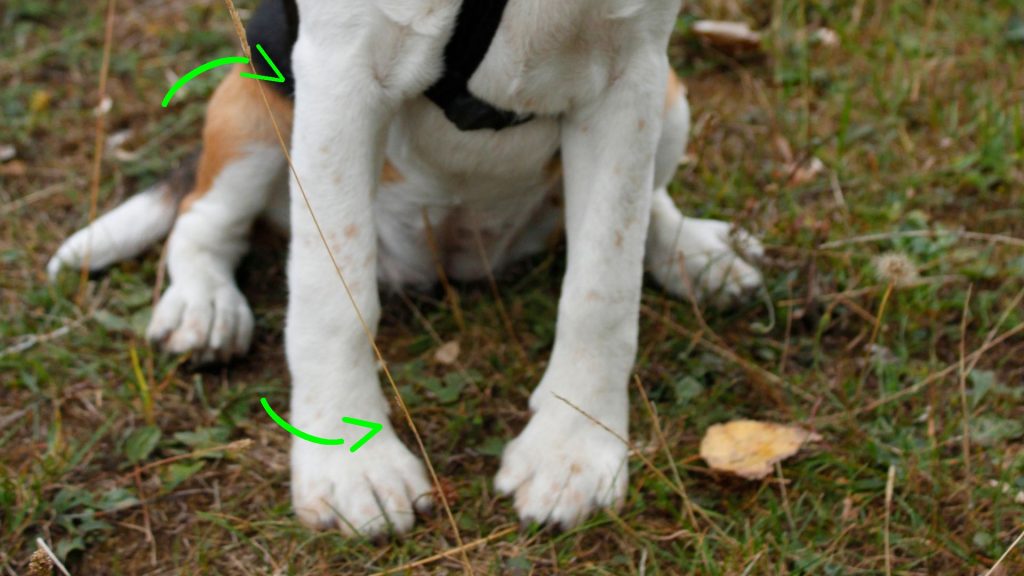
Internal Rotation
Refers mainly to inward rotation of the ball and socket joint in the hip and shoulder. But can also occur to a small extent in the stifle and in the lower forelimb.
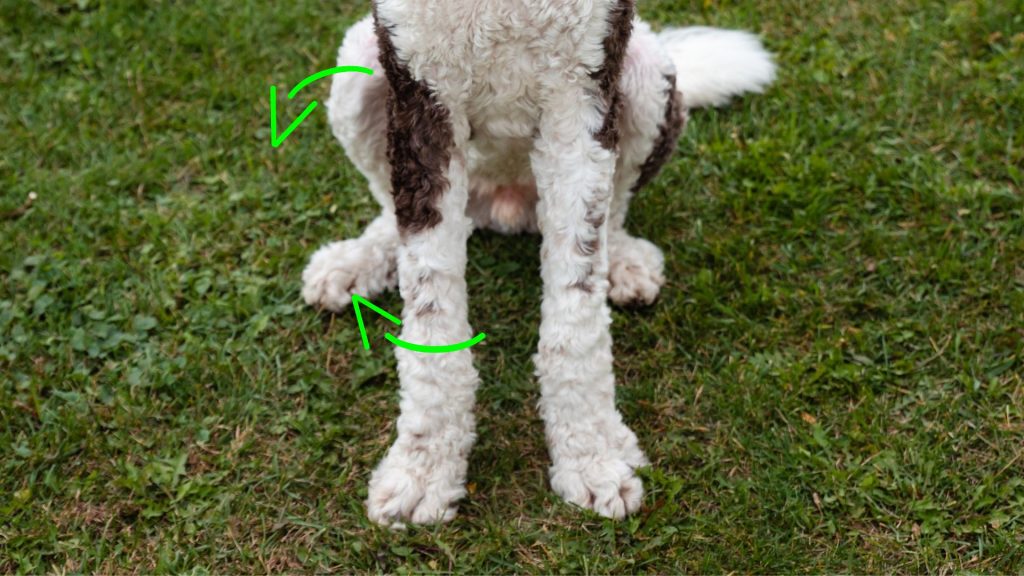
External Rotation
Refers mainly to outward rotation of the ball and socket joint in the hip and shoulder. But can also occur to a small extent in the stifle and in the lower forelimb.
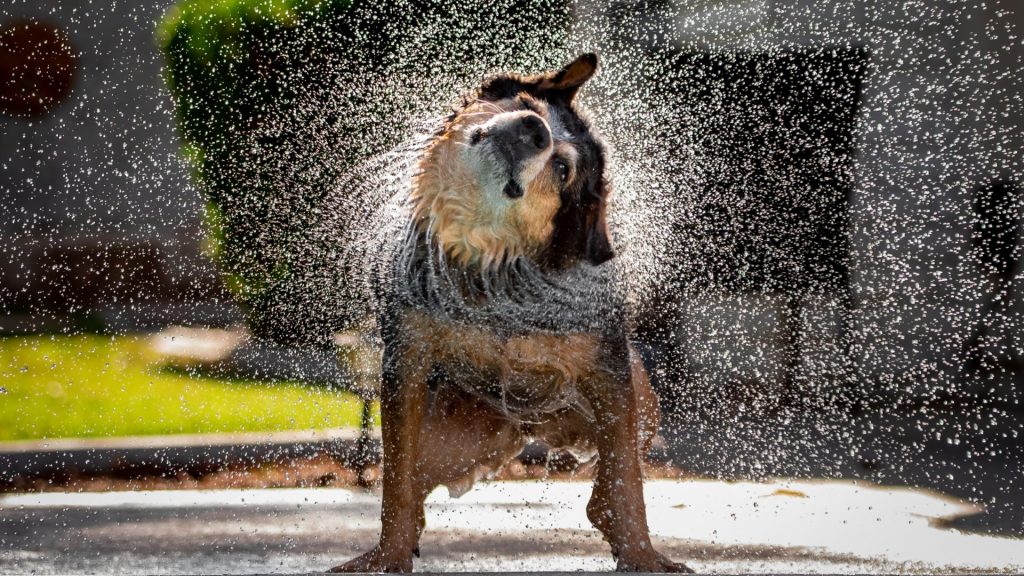
Spine Rotation
Refers to the rotation of one spinal vertebrae in relation to its neighbor or neighboring vertebrae along the transverse plane. This is most common in the canine cervical spine (neck), but can also occur in the TL junction or tail.
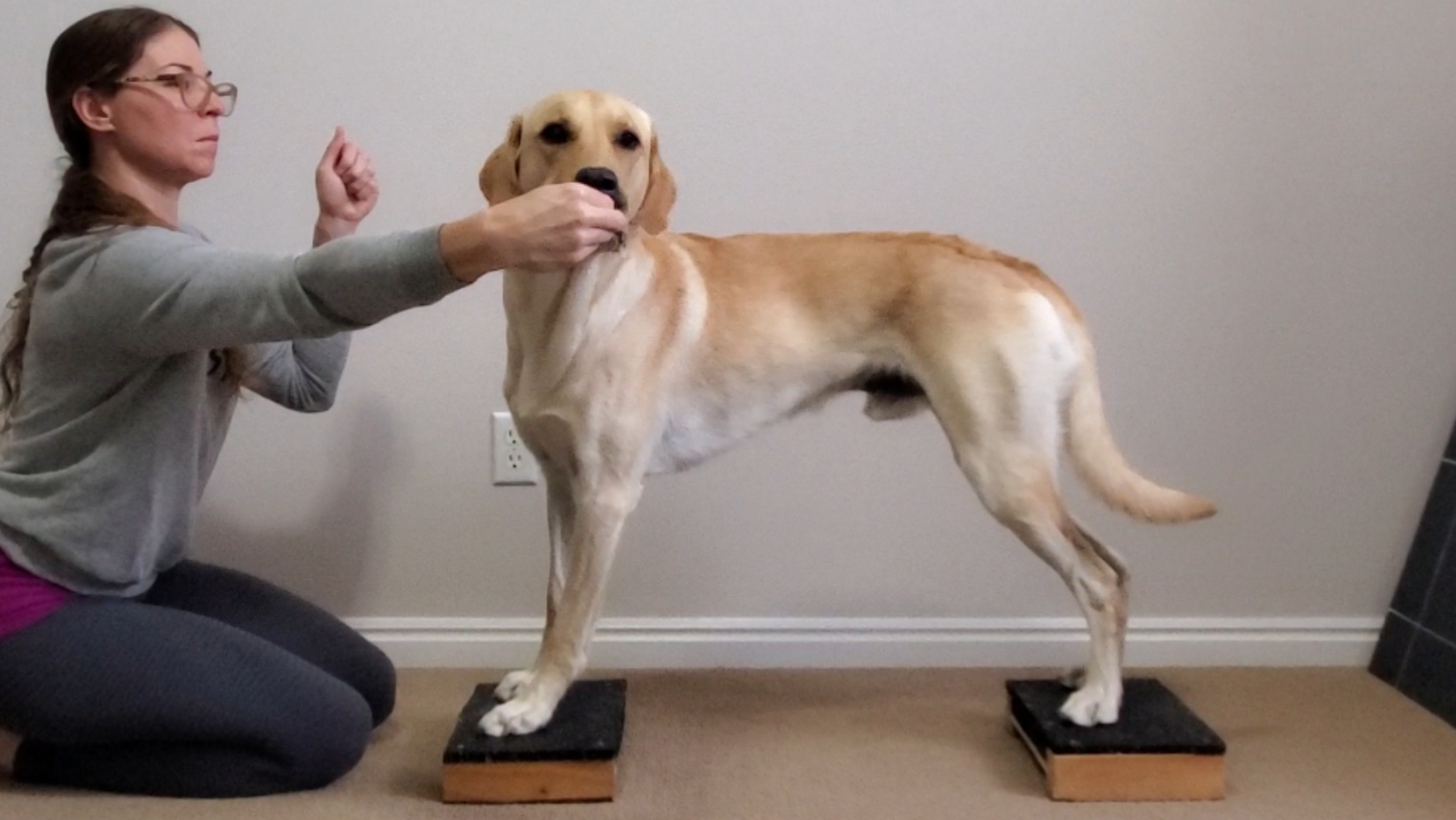
Lateral Flexion
Refers to the bending of the spine to the side along the dorsal plane and can occur along the entirety of the canine spine.
Canine Anatomy: Bones and Joints
Spinal Anatomy
Thoracic: The part of the spine that makes up the ribcage. Dogs have 13 thoracic vertebrae.
Where the different portions of the spine meet is called a “junction”. So where the cervical and thoracic spine meet is the “CT Junction”, where the thoracic and lumbar spine meet is the “TL Junction” and where the lumbar spine and the sacrum meet is the “LS Junction”.
Thoracic Limb Anatomy
The term thoracic limb refers to the front leg, and is often abbreviated “TL”. It contains the shoulder blade, shoulder joint, upper arm bone, elbow, forearm bones, wrist, foot bones, and toes.
Dogs tend to carry 60% of their weight in the thoracic limb… more if they are weak in the core or rear end. This leaves the joints in the TL at a higher risk of impact related injury, especially for sport and working dogs.
Pelvic Limb Anatomy
The term pelvic limb refers to the rear leg, and is often abbreviated “PL”. It contains the pelvis, hip, upper thigh bone, knee, shin, ankle, foot bones and toes.
Dogs often times need to be taught to be aware of their rear end, through implementing rear end awareness exercises. The most common orthopedic injury in canines is to the CCL, a ligament in the stifle joint.

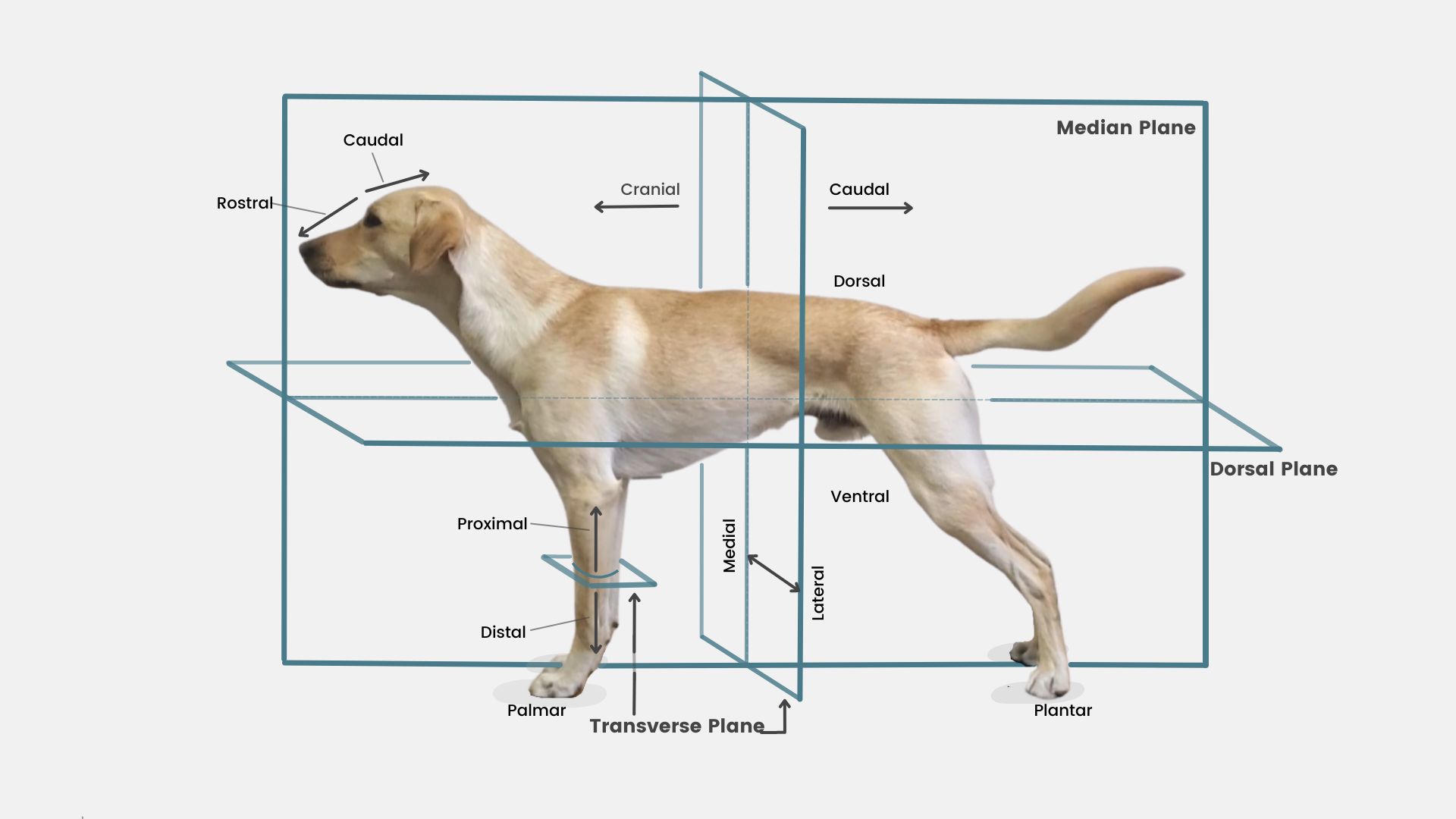
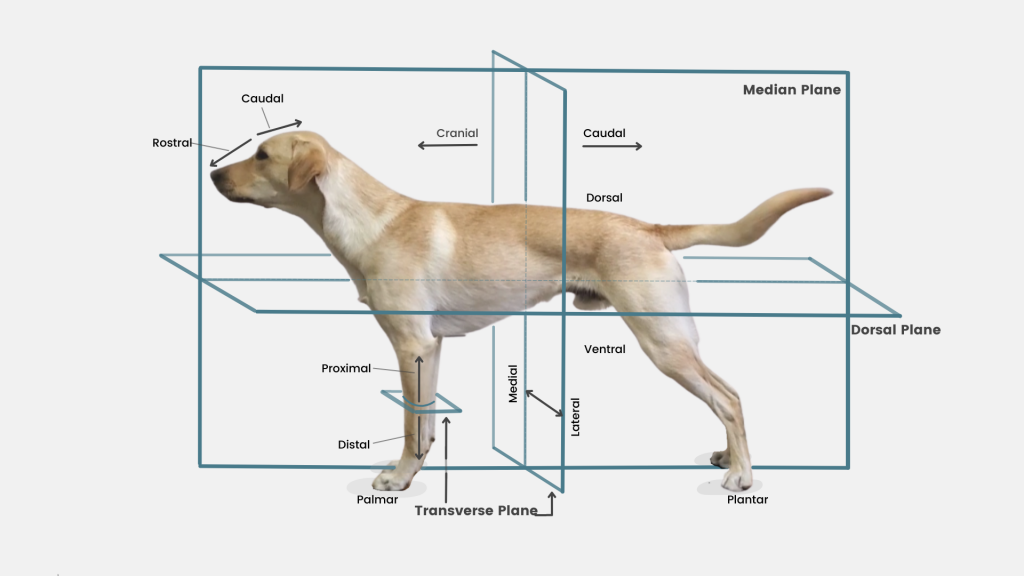
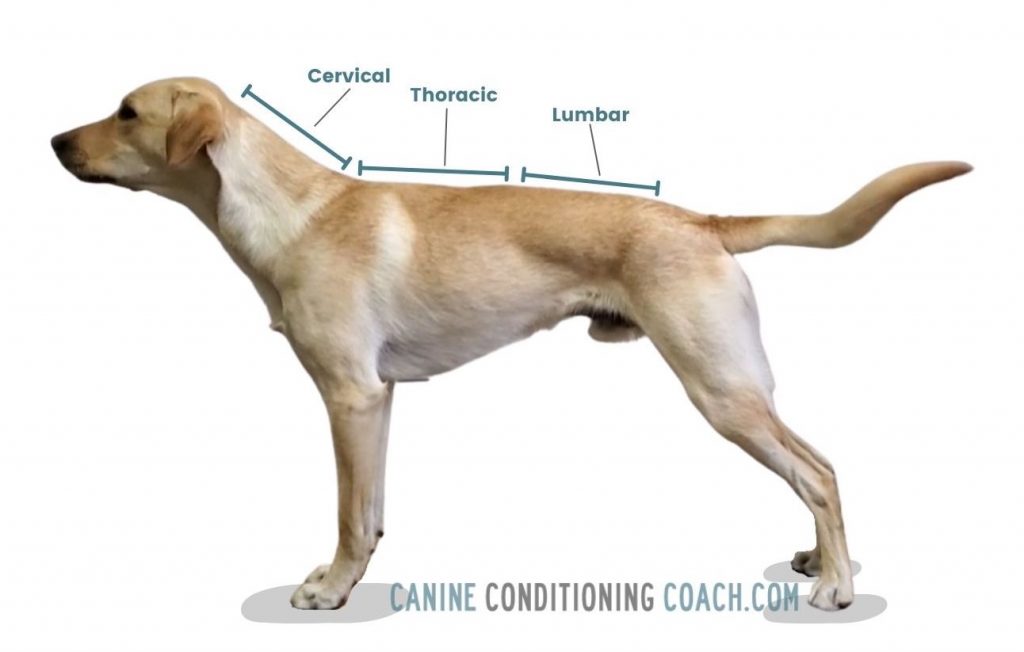
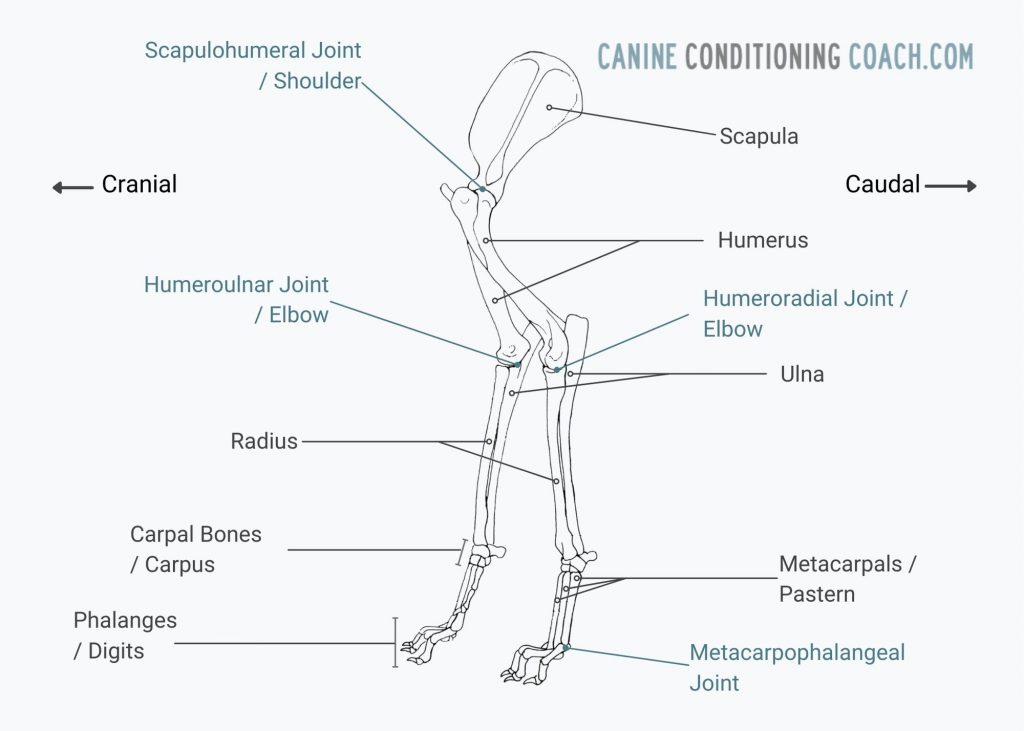
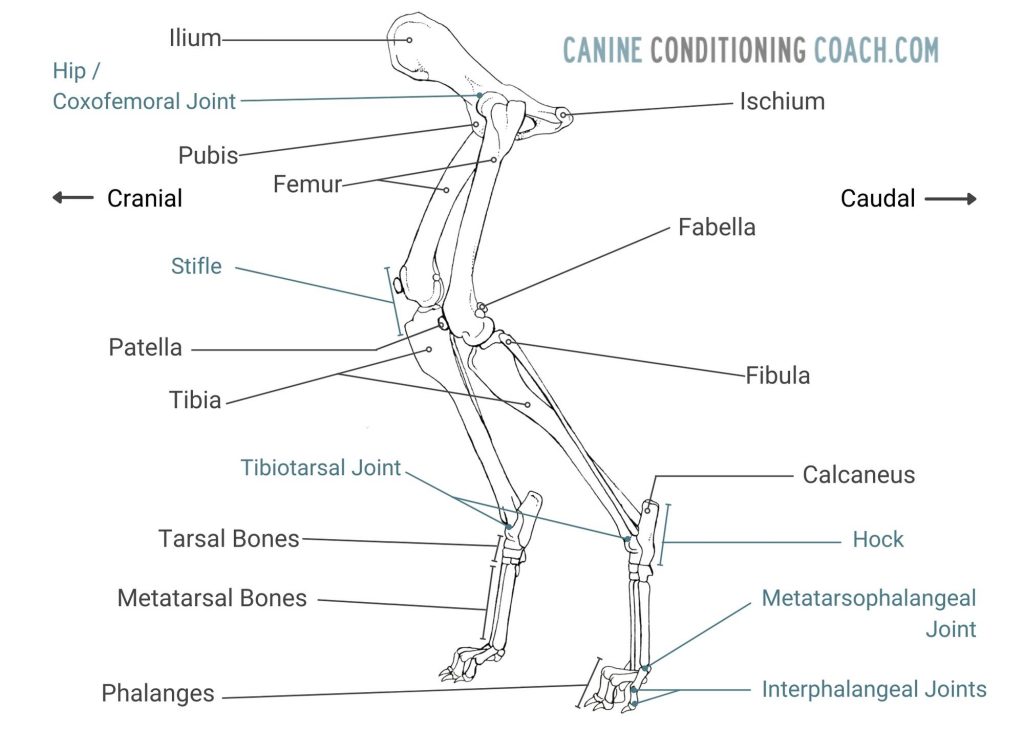
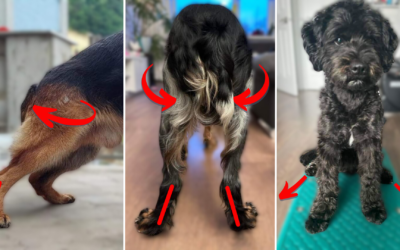
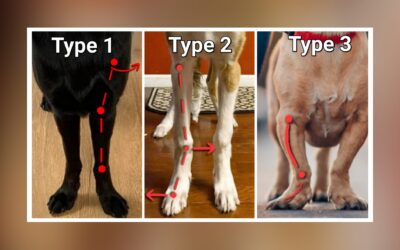
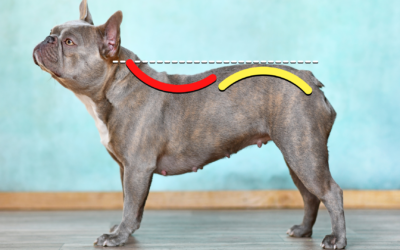
Thank you for including these terms and pictures for reference!!!! They are SO very helpful!
I’m so happy you’re finding this resource helpful! I plan on continuing to add to it with more graphics, and further explanation!
Love it! Not that I will remember it but still love it. Way to go Anna Lee.
Thanks!! This was an important resource for me to offer. And the good thing is you can always come back and look stuff up again later!!
Thank you for this, Anna Lee. It’s awesome to have this explained in such a simple and understandable way. It would be awesome if members could download it as a PDF as well so it’s easy to read/print. Would love to add it to my printed program so I can be remembered and learn better. This is amazing in it’s own though – thank you a lot!
Hey Mika!
I’m glad you’re finding the post helpful! That’s a great suggestion about making the anatomy blog downloadable! That’s something I could consider in the future for sure.
I do plan on adding to it quite a bit, but perhaps once it’s finished!
Thanks again for your kind words!
Thank you so much for this. You are brilliant. Your wealth of knowledge and your ability to simplify, clarify, and demonstrate concepts is so, so good! My husband is becoming a bit weary of hearing me say, omg she is so amazing!…every time I review a video or read an excerpt. And he often hears me say, she makes it look so easy!! as I struggle to replicate the videos. I have to admit my dog has rolled her eyes and/or glazed over with my attempts. ..until we finally get it right..
Hey Claire!
Thank you for your kind words! I really want this stuff to be approachable and make sense. And sometimes the languaging is a barrier to entry… And that doesn’t feel good to anyone.
Re: your husband… Maybe we should start to train him up too!!! Hahahah
The simple explanation and fantastic graphics are greatly appreciated!
Hey Abbie!
I’m so glad you’re finding it useful!! I plan on adding to it more and more over time!
Wow, this is great info. Thank you so much for compiling it into easy to digest bits and pieces, love it!
Hey Anke!
Thank you for your kind words!! I’m glad you found the components helpful! I will be adding to this post, and building some other blog posts surrounding the anatomy of specific areas like the forehand, core, and rear end.
I really love anatomy, and find it super interesting!
Hi Anna Lee,
Yes, me too. Everything is connected! Looking forward for what you put up next!
I am here studying! Thank you for all you share with us : ))
YAY!!! I’m glad to know that!!! Maybe I should make a little quiz!
I took a medical terminology class in college. Wish it explained the terms as well as you have. The pictures help a lot. I’m sure I’ll be referring back this area.
Thank you so much for your efforts – this is such a helpful guide and reference.
Thanks Vicki! I’m glad you found this resource helpful!! I’m getting ready to add a new section!! So be on the lookout!
This is wonderful and so helpful – thank you, thank you!